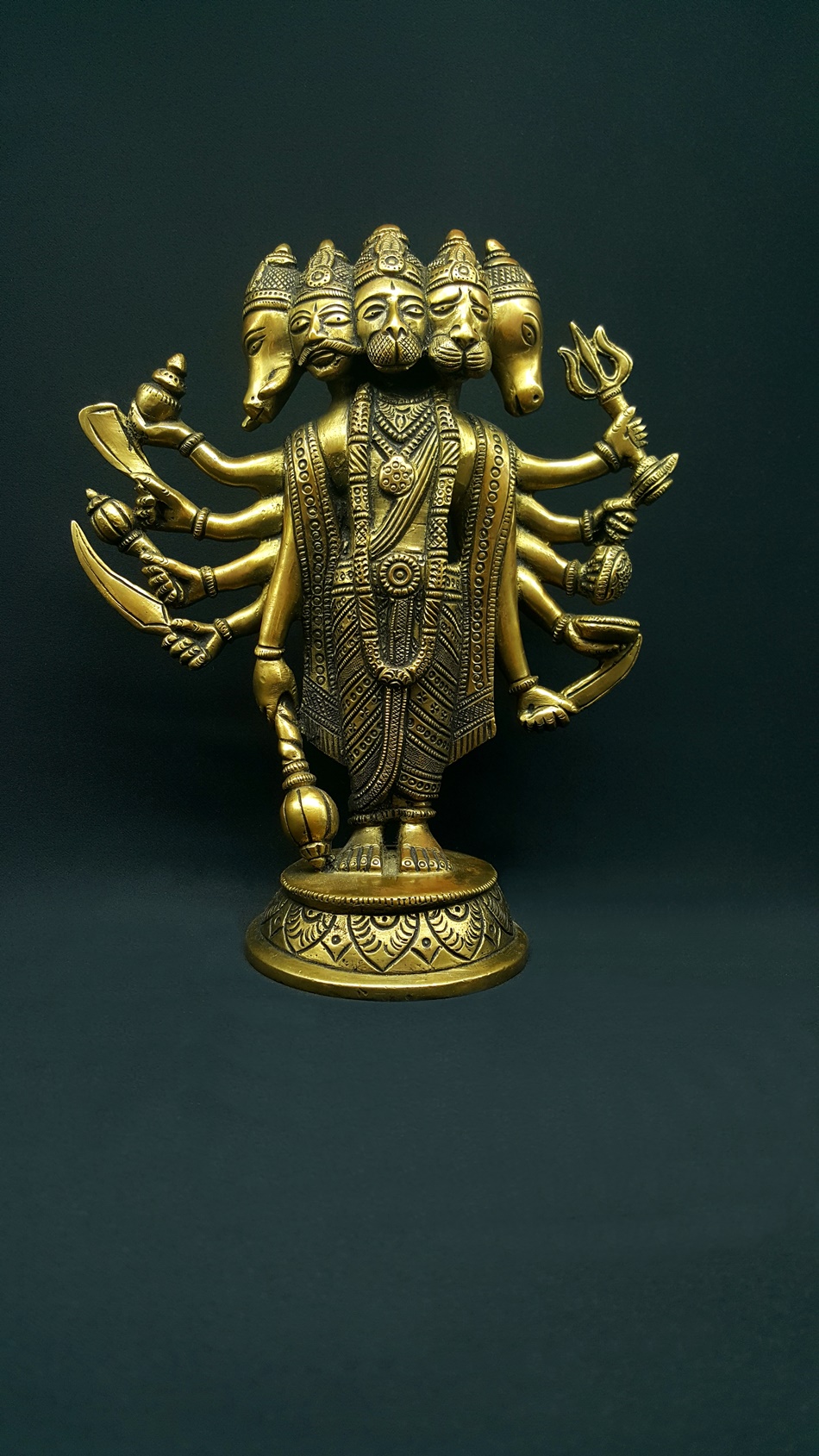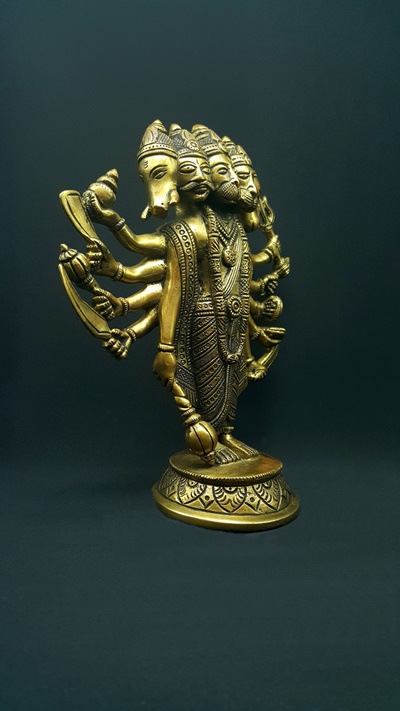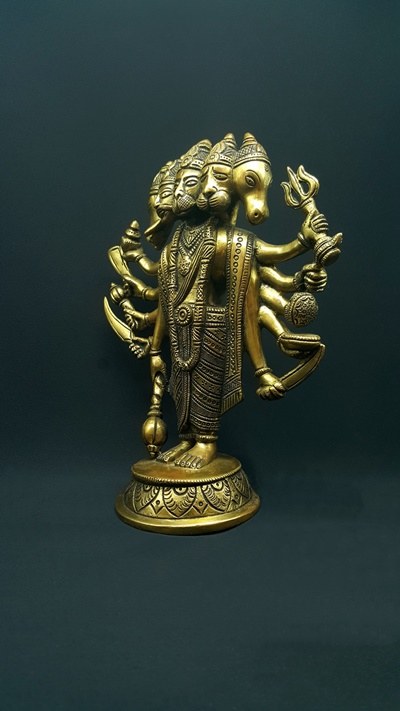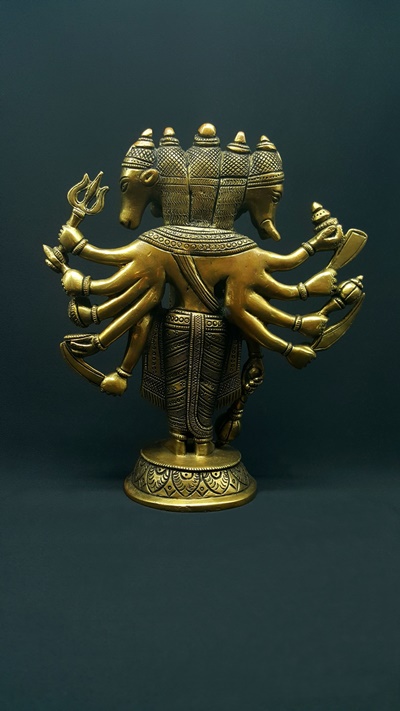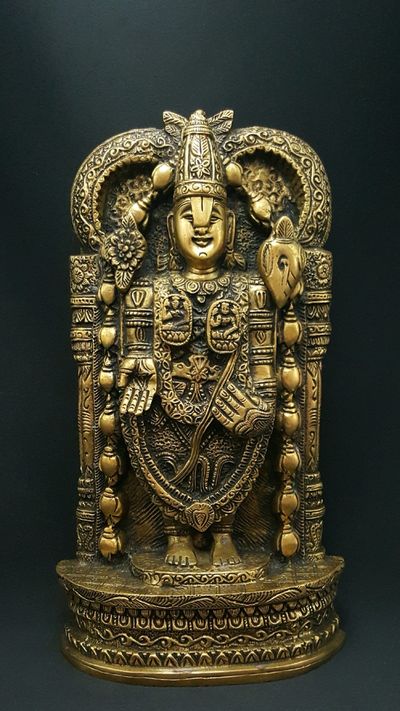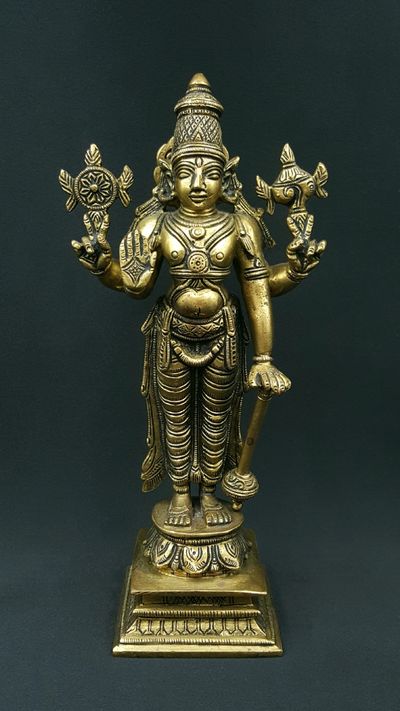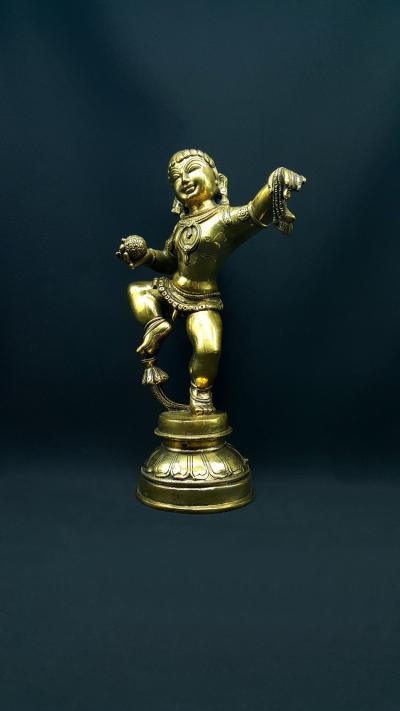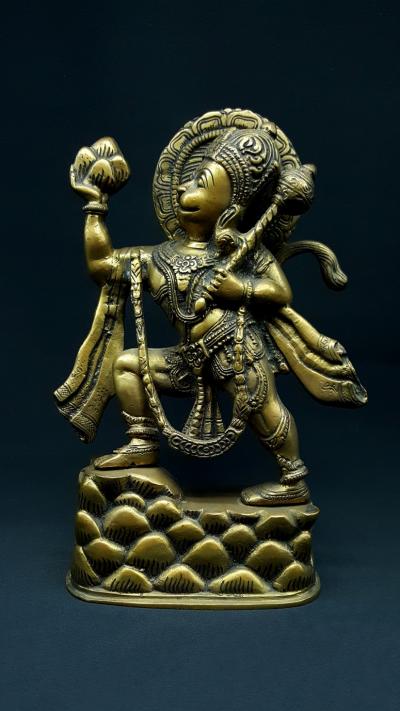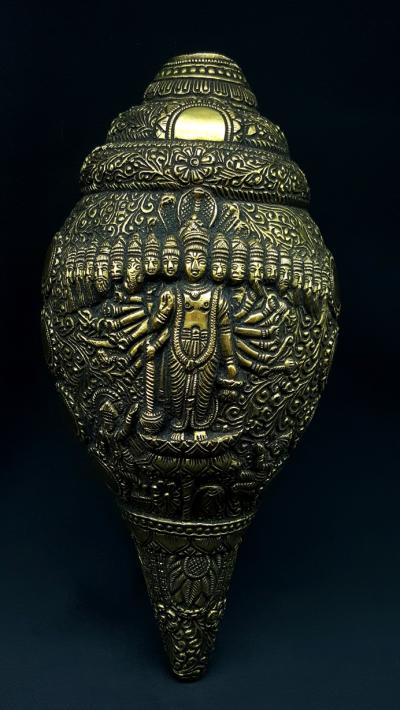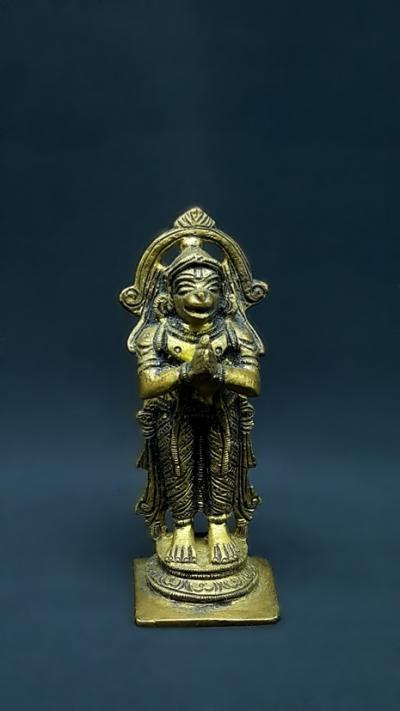Statue Hanuman Panchmukhi
Le grand disciple
€550.00
Statue de Hanuman : il est le grand guerrier et le grand serviteur par excellence. Avec ses cinq visages, 10 bras et autant d’attributs, il symbolise le disciple complet. En savoir plus...
Hauteur : 22.7 cm
Poids : 3.110 Kg
Art sacré
Cire partielle
Origine : Dehli - Inde
Livraison gratuite UE, Norvège et Suisse
Description
Hanuman, le dieu Singe, est réputé pour sa force (il serait capable de soulever des montagnes), sa vaillance et sa bravoure. Il est très populaire dans les villages Indiens.
Sous la forme de Panchkhumi, soit Hanuman aux cinq visages, il représente le disciple accompli.
Histoire
Dans le Ramayana, pour sauver Rama et Lakshman, Hanuman dut tuer Ahiravana qui les avait enlevés et cachés à Pathala Lokha : la seule façon de réussir cet exploit fût d’éteindre en même temps cinq lampes brûlant dans 5 directions différentes et qui cachaient la vie du démon. Le moyen trouvé par Hanuman fut de prendre la forme de Panchkhumi.
Les 5 visages représentent des avatars de Vishnou : Varaha, le dieu sanglier, Garuda, monture de Vishnou, Narashima, homme lion et Hayagriva, homme cheval ainsi que Hanuman au centre.
Cette statuette de Hanumân symbolise : le parfait dévot
Les 5 visages possèdent de nombreuses significations dont :
- les 5 sens, les 5 éléments (ciel, air, terre, feu, eau) : ces aspects ont tous été transcendés par Hanuman lors de ses exploits héroïques dans le Ramayana.
- cinq formes de cultes
Hanuman, dans cette statue, rassemble les nombreuses qualités des avatars de Vishnou : connaissance/sagesse (Hayagriva), victoire et absence de peur (Narashima), succès, bravoure, pureté de l’esprit (Hanuman), vitesse, omniprésence (Garuda) ainsi que la prospérité, la richesse(Varaha).
Ses 10 bras portent chacun un attribut différent :
La massue
Gadâ, arme primitive, incarnation de la force brute et exceptionnelle de Hanuman mais aussi de la maîtrise des forces instinctives, physiques et de la nature. Dans cette statue, Hanuman en porte 2, une grande dont l’extrémité est proche de son pied droit et une plus petite dans sa main droite du milieu.
L’épée
Khada, symbole de sagesse : elle tranche l’ignorance, dissout les ténèbres qui obscurcissent l’esprit. Elle nous libère des liens de l’attachement (de tout ce qui nous sépare de notre nature ultime, l’absolu : croyances, démons intérieurs, biens matériels…). La présence d’une épée marque donc l’intelligence, la clarté de l’esprit.
La hache Parashu et le couteau(Katar) (en bas à gauche) ont des significations très proches de l’épée.
Le vase (dernier bras, en haut à droite)
Kalasha : abondance -sagesse-immortalité
Le célèbre trident de Shiva
Ses trois pointes possèdent de nombreuses interprétations et surtout celle de la représentation des trois aspects du divin. La Trimurti : Brahma, la création, Vishnou le maintien et Shiva la destruction et le renouvellement. Et aussi les 3 gunas, les 3 plans physique, émotionnel et spirituel….
Le disque- la roue
Chakra : le Chakra possède de nombreuses significations et symboliques : rond, cercle, soleil. Il peut être figuré comme un disque, une roue avec rayons... La roue représente le cycle de la naissance et de la mort qui fait intégralement partie de la vie et marque le changement continuel.
Le Chakra symbolise aussi le soleil, la lumière, le feu qui permet de détruire l’ignorance, de voir la pure réalité : ainsi les dieux l’utilisent-il comme arme pour détruire les démons qui sont un archétype de nos fausses croyances, du mental.
Le bouclier
Khetaka, signe de protection, utilisé par les divinités combattant des démons et ne possédant pas d’armes invincibles.
L’assiette remplie de sang marquant la victoire et la puissance de Hanuman.
Le couteau est la dernière arme en bas, à gauche.
Parure Hanuman est revêtu d’habits royaux, richement brodés renforçant sa stature hors norme.
Hanuman Panchmukhi est invoqué lorsqu’il est besoin d’affronter des défis immenses qui demandent de nombreuses qualités et moyens.
